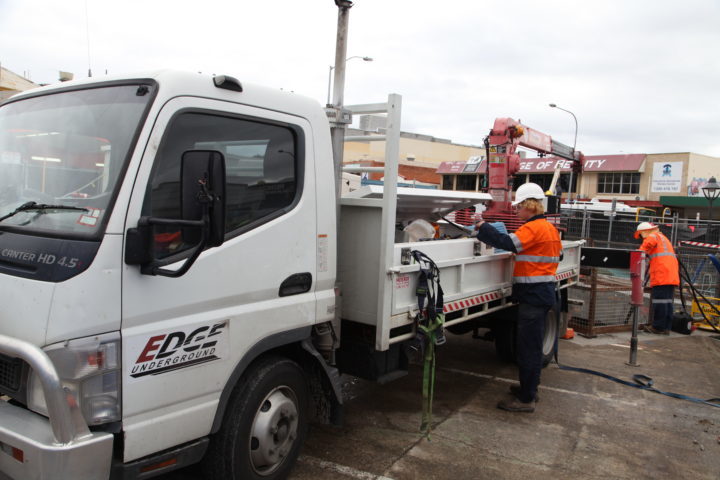When it comes to microtunnelling, an installation is only as good as the contractor undertaking the project. But with numerous contractors to choose from it’s important to know what to look for when selecting one to ensure the best chance of a successful installation. Here, we look at four key considerations when selecting a microtunnelling contractor.
1) The contractor’s track record in the presumed ground conditions
Ground conditions can make or break the success of a microtunnelling project, so selecting a microtunnelling contractor that is sufficiently experienced in similar ground conditions will provide the highest chance of success.
Unfortunately, it is not uncommon for contractors to arrive on site and find the ground conditions are different to the geotechnical information provided.
“At the end of the day, geotechnical information is often not entirely correct. That’s through no fault of anyone – the core sample and the geotechnical inspection are literally needles in a haystack,” Stuart Harrison, Managing Director at Edge Underground, said.
“As you pass every metre of that ground from one point to another, if there’s any changes in the ground, you’re going to find them. Whereas those needles in the haystack could just be in spots where there aren’t any changes of conditions.”
Mr Harrison said he has often come across ground where previous excavations had taken place and had been reinstated with a whole range of material.
“Many years ago, the reinstatement of deep excavations weren’t as heavily critiqued on the style or the material being used as backfill, nor the method of compacting, so they’d just backfill it with whatever they wanted to.
“We have encountered areas which would suddenly change from consistent ground conditions to material that would be consistent with a tip.”
Ideally, when selecting a microtunnelling contractor, they should not only be experienced in similar ground conditions but also any other ground conditions known to occur in the vicinity of the project site to ensure they are better placed to be able to deal with any changes.
2) The equipment and method used
Selecting a contractor with the most appropriate equipment is another consideration.
“While selecting an experienced contractor is important, looking at what equipment they use can also play a large role in ensuring a successful installation,” Mr Harrison said.
“Sometimes even the most experienced contractor may not have the right equipment on hand to deal with unexpected ground conditions. If this happens, project costs and time can increase dramatically.
“The key is using a machine, such as the AXIS laser guided boring system, that has the ability to retract part-way through an installation. Machines that don’t retract need the drill to be excavated over the head at the point of difference if there is any significant change in the ground conditions.
“Retracting also allows contractors to complete a pilot line first to confirm the geotechnical information is correct, resulting in a higher percentage of successful installations.”
Mr Harrison said another key point to look out for was an unbiased opinion.
“The success of a pipeline installation is also reliant on the installation method chosen. There are a wide range of trenchless options out there, with some more suited to particular project conditions than others.
“A good contractor will provide you with options and an unbiased opinion when it comes to a project. They’ll tell you the positives and the negatives of all the available options so that the most appropriate method can be chosen, rather than only giving the option of one method and risking installation failure or problems during installation.”
3) The contractor’s contingency plans
Along with changing ground conditions, there are numerous other aspects of a microtunnelling project that can go wrong, but a good contractor will be able to foresee these challenges and come up with contingency plans.
“Working in a tight timeframe in particular can be a problem as there is very little time to waste on coming up with solutions to problems on the spot,” Mr Harrison said.
“Unexpected ground conditions, poor weather and mechanical failure all need to be accounted for in this instance as there is always need for a ‘Plan B’ if something goes wrong.
“For example, we worked on a project which required a gravity sewer to be installed under a railway with a timeframe of 48 hours. We had to make sure we had an appropriate crew, and were using the most appropriate tools, materials and drilling equipment. We also had contingency plans for changing ground conditions, disposal of drilling mud, mechanical failure and supply of materials before the project began.
“It is this level of planning that is required by contractors to ensure a project is executed smoothly and on time, giving a clear action plan and backup in the case of something unexpected taking place.”
4) The contractor’s depth of knowledge within the field
A contractor’s level of experience is only one indication of their depth of knowledge of the field. There are other indications that a contractor is an expert.
“When looking at the depth of knowledge of a contractor, you can look at their level of understanding and management of the requirements of different councils, utilities and regulatory environments. If they’re familiar with the rules and regulations of the area they’re working in they’ll be able to work with you to deal with any potential issues that might arise to eliminate the risk of costly mistakes or oversights,” Mr Harrison said.
“Who a contractor knows is also good to take into account. Do they have well-respected industry personnel on staff? Do they have a good working relationship with other contractors and subcontractors they may be working with?
“When contractors are able to confidently navigate relationships, and quickly and easily deal with any conflicting interests that may arise, the job site is a much more pleasant place for everyone to be.”

